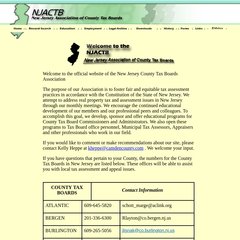Alternative banking is evolving, and in some cases, attracting attention from big finance and tech

Mixing friendship and finance can be messy, but for many Canadians who take advantage of peer lending and savings, it works.
The concept involves groups of friends or acquaintances pooling money together to provide funding in situations where traditional financial institutions won’t or don’t work.
Rahma Mohamed, who lives in Edmonton, started participating in groups like this – called hagbads in her Somali community – once she was old enough to start working.
For 10 months at a time, she and about a dozen other women would agree to save together, contributing equal amounts every month and taking turns withdrawing largers sums made up of everyone’s contributions. The system was based on trust: a newcomer to the group could not withdraw right away, but only after a history of making payments.
- The Cost of Living ?s money – how it makes (or breaks) us. Catch us Sundays on CBC Radio One at p.m. ( p.m. NT).We also repeat the following Tuesday at a.m. in most provinces.
Thanks to these groups, Mohamed said she saved enough to pay off nearly $30,000 in student loans within three years of graduating from university.
Beyond giving her a social structure to save, she said the groups helped strengthen friendships and community ties, as women confided in each other and worked together toward achieving their goals.
“It feels almost like people are paying into your dream, even though it’s your own money that you’re getting at the end,” she said.
Academics call groups like this rotating savings and credit associations, but they are known by many different names in Canada and around the world.
“It’s very interesting and a relatively simple mechanism for allowing small amounts of money to be accumulated within a group that has group responsibility and also has regular, agreed-upon payout schedules,” said Susanna Khavul, a professor in the Lucas College and Graduate School of Business at San Jose State University.
Now alongside the COVID-19 pandemic, peer lending – in many forms – is becoming more mainstream as some groups move online, entrepreneurs seek alternative funding sources and tech companies design platforms to cash in on these valuable peer networks.
Moving rotational savings online
Co-founder and CEO Jonah Chininga said he was inspired to develop a savings app after struggling as an international student to access and build credit in Canada.
Through Chininga’s app, groups of three to twelve users link their bank accounts and make monthly payments. The app operates like a rotating savings and credit association, but with a twist: since the company sends transaction data to credit bureaus, users also build credit and pay a small monthly fee to use the service.
Launched in September, the app is seeing its highest engagement from young people and young entrepreneurs who have struggled during the pandemic.
Non-profit lending circles expand as well
The PARO Centre for Women’s Enterprise, a non-profit social enterprise based in Thunder Bay, Ont., runs more than 185 peer lending circles in that province.
- Don’t feel like waiting for your dose of The Cost of Living on Sundays? To listen anytime,click hereto download the show to your podcast player of choice. Subscribe to get episodes automatically downloaded to your device.
“Women started calling us from all over the province, even if it wasn’t where we were normally working, because they were really struggling and they didn’t fit into the criteria for federal programs to be able to keep their business going,” said Rosalind Lockyer, the PARO Centre’s founder and CEO.
The circles and the training sessions linked to them have moved online. The digital format is allowing the non-profit to serve more women than in the past.
Peer-to-peer lending as a business
Canadian peer-to-peer (P2P) lending platforms such as Lending Loop and goPeer connect borrowers with lenders, claiming to be faster and more accessible than large banks and financial institutions.
Though the industry is less established in Canada, P2P lending has seen increasing popularity over the past decade in other countries, including the United States and United Kingdom.
Investors began to make https://guaranteedinstallmentloans.com/payday-loans-sc/ huge investments in these American and British platforms … they are much less personal now and they are much more seen as kind of a big business.
“What interests me the most is actually the link between these very small fringe banking and financial practices in the larger financial markets because they’re actually deeply connected,” said Rob Aitken, a professor of political science at the University of Alberta and author of the book Fringe Finance: Crossing and Contesting the Borders of Global Capital.
Though P2P platforms might have been intended for individual borrowers and lenders, according to Aitken they also end up attracting large institutional investors.
“Investors began to make huge investments in these American and British platforms, and it’s changed the dynamic there quite a bit so that they are much less personal now and they are much more seen as kind of a big business,” Aitken said.
But whether online or offline, Susanna Khavul predicts peer lending and savings groups will always be around in some form because they serve a social purpose, in addition to a financial one.
Written and produced by Madeleine Cummings. Click “listen” at the top of the page to hear this segment, or download the Cost of Living podcast.